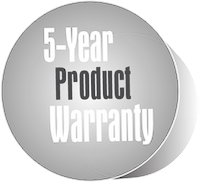Car Speaker Cones
Car Speaker Cones
Since the first moving coil speaker was developed in 1924, researchers have spent astounding amounts of time looking to improve its performance. The first principles of speaker design haven’t really changed that much since then; create a motor using a coil of wire sitting in a magnetic field, send electrical impulses through the coil and it will move backwards or forwards depending on the polarity of the signal. Attach the coil to a membrane of some kind attached to a chassis and that will move air, which will be heard as sound by our ears.
However, the physics of moving the maximum amount of air for the minimum amount of effort and ensuring that the air movement is true to the original impulses that cause it requires a great deal more thought than may at first be realised.
If we were making a list of the most attractive attributes of the membrane it would include these:
Lightweight -To make the speaker as efficient as possible and ensure that rapid movement is possible, the cone needs to move quickly in response to changes in the coil. A full-range speaker needs to be capable of moving forward and backward 20,000 times per second in a perfect world. Low-mass and rigidity are required and major increases in fidelity can be achieved by separating low and high frequencies, using different speakers with different materials for each range.
Shape – Traditionally the membrane is conical in shape hence the name “cone”. This makes the material hold shape when being moved forward and backwards. This shape also helps to ensure that forces on the surround, which attaches the cone to the speaker chassis are equally distributed.
Rigidity – One of the most unpleasant effects of a floppy cone material is cone break up. As the cone is moved, the surround that attaches it to the chassis restricts its movement, which can cause it to change shape in a non-linear fashion as it moves.
Durability – A speaker is going to move a lot during its lifetime. The material needs to be durable enough to remain in good shape throughout its lifetime. In a car where humidity levels can reach 90% and dashboard temperatures can reach 120 degrees Centigrade, the material selected needs to be designed to be water resistant and temperature stable.
In home hi-fi, the traditional materials of choice are generally paper-based, whether this is a single piece of card, multiple layers bonded together or reconstituted paper pulp. In a car, the same materials can also used although in factory fitted units they are generally made of paper. Specialist aftermarket speakers with paper or pulp-based cones are usually coated or mixed with materials to increase rigidity and resistance to moisture. Materials such as Polypropylene, Carbon fibre, Kevlar and Aluminium amongst many others have been used successfully. More recently, composite materials made by mixing minerals, metals and paper products in different combinations have all been used and in fact the research continues.
Many audiophiles will have a favourite material and some will express strong views on why it is better than everything else. In actual fact, it would be hard for anyone to state categorically that one material sounds better than another as all of the elements of a speaker are designed to work together and changing one of them would often mean adapting others to complement the change.
There is no substitute to listening to speakers and making your final selection on sound rather than anything else. However, durability should always be taken into account.
As always, we would always point you in the direction of a FOUR MASTER who works with products day in day out. They are in a far better position to advise you than anyone else – especially the bloke down the pub whose son is studying computers at college!
www.fourmasterscaraudio.co.uk : 0800 652 5125



